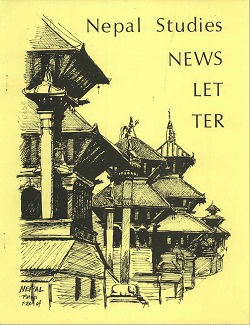Author Biography
Elizabeth Williams-Oerberg is an Assistant Professor and the Co-director for the Center for Contemporary Buddhist Studies at the Department of Cross-Cultural and Regional Studies, University of Copenhagen. She is part of an international, collaborative research project on Buddhism, Business and Believers with her individual research project focusing on Buddhism and tourism in Ladakh, India. She has a PhD in Anthropology from Aarhus University, Denmark, where she engaged in research on Buddhism and educational migration among Ladakhi youth in India. She is also the co-founder of the Nordic Himalaya Research Network.
Abstract
In September 2016, hundreds of thousands of devotees gathered in Ladakh to celebrate the millennial anniversary of Naropa (1016- 1100 CE), an Indian Buddhist scholar-saint who is widely revered in the Himalayas. Deemed ‘Naropa 2016,’ this Himalayan Buddhist festival centered on the ritual of na ro gyen druk (Tib. na ro rgyan drug), the ‘Six Bone Ornaments of Naropa.’ What was announced as a sacred Buddhist ritual of revealing these ornaments, also included evening performances by renowned Bollywood performers with booming sound and impressive light shows enjoyed by large crowds of monks and laity until late in the night. This was one of the first occasions that popular Bollywood artists came to perform in Ladakh, and the first time that Bollywood and Buddhism were combined to such a large degree. In this article, I take a closer look at the spectacular Naropa 2016 festival. Based on ethnographic participation and recording of the festival through fieldwork, I consider this Buddhist festival as an important site for negotiating social change. Especially due to heightened modernization processes in Ladakh, the role of Buddhist institutions has been undergoing swift changes. Under the leadership of the Gyalwang Drukpa, the Drukpa organization pushes against processes of secularization, which have entailed a lessening of the importance of monasteries in the swiftly transforming Ladakhi society. In organizing a large monastery festival and incorporating elements such as Bollywood performances, the Drukpa Kagyü organization presented a vision of their religious institution as adapting to the current times and relevant for modern, 21st century Ladakhi lives. Hence, the Naropa 2016 festival, I argue, worked as an attempt to introduce alternative cultural understandings of the role of Drukpa Kagyü monastic institutions, and in particular, the role of the Gyalwang Drukpa.
Acknowledgements
The author wishes to thank the Carlsberg Foundation and the Danish Council for Independent Research for their generous financial support towards the research upon which this article is based. The author also wishes to thank Jane Caple, Erica Baffeli, Trine Brox, John Bray, Rafal Beszterda, and the two anonymous reviewers for their close reading and helpful comments on early drafts of this article.
Creative Commons License

This work is licensed under a Creative Commons Attribution-Noncommercial-No Derivative Works 4.0 License.
Recommended Citation
Williams-Oerberg, Elizabeth. 2020. When Buddhism Meets Bollywood: The Naropa 2016 Festival in Ladakh, India. HIMALAYA 39(2).
Available at:
https://digitalcommons.macalester.edu/himalaya/vol39/iss2/13


